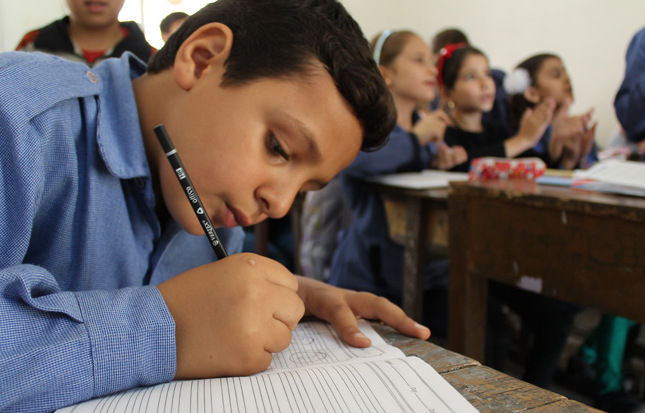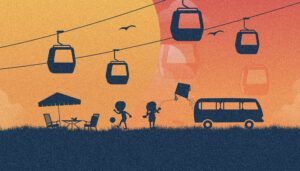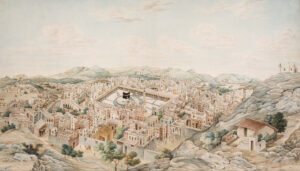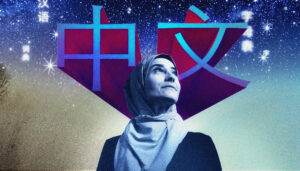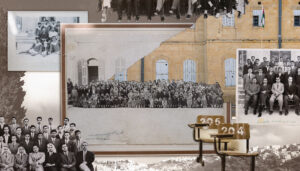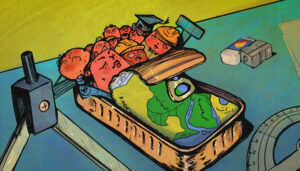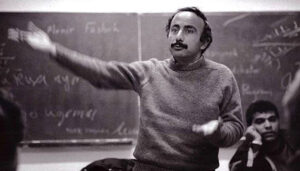By Dalal Salameh (translated from Arabic by Siwar Masannat).
Children learn in the first grade textbook for Arabicthat the true Muslim is one who does not hurt other “Muslims” by his words or actions. In the Islamic Education textbook for the third grade, children learn that the true Muslim “loves all Muslims, safeguards their souls and money, and takes care not to hurt them by words or deeds.” The true Muslim also “does not intimidate other Muslims by raising his voice, or threatening them with a cane or weapon.” In the same book, children learn that between the three monotheistic religions’ books, the Quran, Bible, and Torah, only the Quran has been “safeguarded by God from modification and corruption.”
These are examples of the values presented in the new textbooks for grades one to three, which the Ministry of Education had launched at the beginning of the current year as part of the first phase of changing the curricula of all levels. This change emerged out of the escalating controversy over the relationship between the value system presented in public education texts and the phenomenon of religious extremism, amidst voices that called for educational content devoted to religious tolerance.
However, a primary reading of the new books, which explicitly tell six- and seven- year olds that the holy books of other monotheistic religions are “corrupted” and that peaceful coexistence is a value exercised exclusively among Muslims, points to the fact that the same old mentality produced them. The proof lies in the enormous religious impulse within the content of textbooks for various subjects, such as Arabic, and Civil and Social Studies, and even the sciences. It would be understandable to encounter this focus in Islamic Education textbooks; however, the other topics are also taught to children of different religious backgrounds.
The problem here is not in associating values with Islam, but rather in the exclusive connection established between these values and Islam.
In the content of the Arabic language curriculum for the first three grades, out of 46 lessons, 20 lessons contain religious material, eight of which are completely religious both in the text presented (such as Qur’anic verses, hadiths of the prophet, or religious stories) as well as in the subsequent questions and activities. The activities following lessons comprise religious content, such as verses and hadiths of the prophet corresponding to the values presented in lessons, which the children are asked to memorize.
In science textbooks, each lesson is introduced by a Qur’anic verse whose content is related to the scientific concept presented in the lesson. In the social and civic education curriculum, the values offered by lessons, such as honesty, tolerance, justice, equality, integrity, and respect for others, are all associated with Qur’anic verses or hadiths of the prophet and his companions (the Sahabah). This also occurs in the Arabic language textbooks.
The problem here is not in associating values with Islam, but rather in the exclusive connection established between these values and Islam. Such presentation rips these values out of their human commonality, rendering Islam, in the children’s consciousness, as the sole source of values. Islam becomes the axis of the world, and all that is presented as value and fact is either a result of it, or compatible with it. At the same time, the religious “other” is invoked only to be branded with aberrance. Exceptions include an anecdote of the Caliph Omar ibn al-Khattab punishing the aggression of Amr ibn al-A‘as, the son of one of the prophet’s companions, for hitting a Copt who beat him in a race; a story about Thomas Edison, the inventor of the light bulb; and an image of a church in a social studies textbook. All other mentions of the religious other in these books, especially in the Islamic studies books, are confined to infidels, Romans, and enemies. There is also a consistent discourse on erring and guidance to righteousness, with an association of righteousness with Islam, and erring with everything else, effectively dividing the world in a child’s consciousness to two parts: Muslims and infidels. And because Muslims are in a continuous struggle against infidels in these books, they are not presented as part of the world, but rather in opposition to and within a struggle against it.
What mentality is responsible for this change in curriculum? And what is the mechanism that has created this change?
Because Muslims are in a continuous struggle against infidels in these books, they are not presented as part of the world, but rather in opposition to and within a struggle against it.
Before these new school textbooks were launched, people whose source of information is limited to the media would not be able to know the Ministry of Education’s position on claims that textbooks engender extremism. Out of the media clamor—in articles or in the coverage of panels addressing curricular revision—little clear information has been attributed to officials in the Ministry.
Through this scarcity of information, we may assume that extremism in textbooks is not one of the serious concerns of Ministry officials. In the middle of last February, Al-Ghad covered a panel titled “Towards a Comprehensive Strategy of Fighting Extremism… Opportunities and Challenges of National Harmony.” The newspaper quoted the Minister of Education, Mohammad Thneibat, saying that extremism “has not entered our country through education. Rather, extremism came through the open spaces of social media and the transmission of ideologies and practices from outside the country.” Addustour, in its coverage of the same panel, mentioned that the ministry executed a “survey” of school curricula with the aim of deleting all that can “support exaggeration, extremism, and terrorism.” The Minister concluded that “the Jordanian curricula are neutral, unpoliticized, and rife with concepts that encourage moderation and respect for others.” A few days later, in another panel, the Minister exclaimed that he “challenges anyone to find a phrase or a word that encourages extremism or terrorism in school curricula.”
The Minister’s previous statements reveal that the Ministry of Education’s understanding of extremism is perhaps limited to direct and uncivil hate speech, examples of which the Minister is challenging anyone to find.
In spite of the fact that teaching children that the holy books of others are corrupt is a an uncivil form of hate speech, if we concede for this argument’s sake that textbooks are devoid of this message, the root of the problem in educational content remains not in what is explicitly stated, but in what is implied. Educational content operates on two levels: on the surface level, there is a lot of talk about justice, equality, and tolerance; the subtext, however, centers on elevation of the self and denigration of the other. In these books, the other is inscribed as prodigal, or at best, as an absent other, as if he does not really exist in this world.
The heart of this educational content manifests itself in the absence of other systems of faith, religious or otherwise, by presenting Islam as the only and absolute truth, even though it is one of many. There is also an immense celebration of combative imagery in Muslim history, inundating children in nostalgia for the times of Muslim wars in which religion was spread by force. In fact, religion is represented as the base on which people come together, an idea explicitly told to children. In the Islamic Education textbook for the sixth grade, which is due for a change next year, children learn that there are different bonds uniting people, some of which are familial, some based on marriage between families, and others on neighborship. However, the “strongest bond of all” is the bond of religion, which the book calls “the brotherhood of Islam.” In this manner, a child learns that a Muslim in China is closer to him than his Christian neighbor.
The media has mostly failed in creating an actual public discussion about this concern. It failed to address the details and nuances of the issue, and did not surpass mere reporting on calls for more open and tolerant curricula. Moreover, the media did not effectively deliberate on specific excerpts from these textbooks that should be reconsidered, nor did it broach pinpointing the values taught in schools that are thought to foster extremism. Whether we like it or not, delving into the details would mean confronting a lot of issues we treat as Islamic invariables. The fact that this is a thorny issue should not result in us refraining from real engagement, but means that it is necessary for us to find a healthy, productive way to moderate the discussion.
The feat of creating educational material that presents humans as equals regardless of their religious affiliation cannot be achieved overnight, nor can it be enforced through higher official decisions. Educational content in any country is the result of a system of values agreed upon socially. A sudden and radical overthrowing of this system in a domain as sensitive as public education would not be wise, even if its implementation is enforced by an official power. What would result from such an overthrow is violent social resistance to change by fathers, mothers, and educators.
Any change to the values that the educational system passes on to our youth should be the culmination of a real, direct discussion of these values. Such a discussion should be open to all, and parties should express what they really think, which is a considerable challenge. The first step to a gradual change in school textbooks would be finding a way to moderate a healthy debate, and this is the change that we were hoping to see in the new curricula this year. But instead of being a first step in a journey towards an educational system that fosters rationalism, openness, and acceptance, the lack of a true open discussion has turned this change into a step in the opposite direction.
